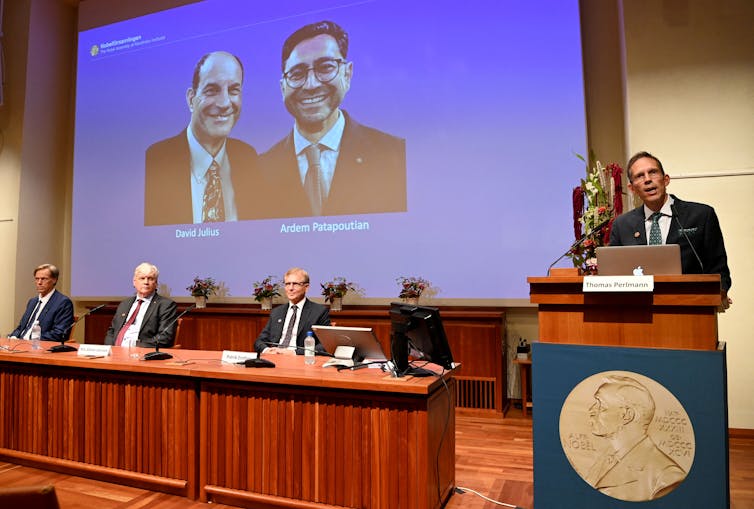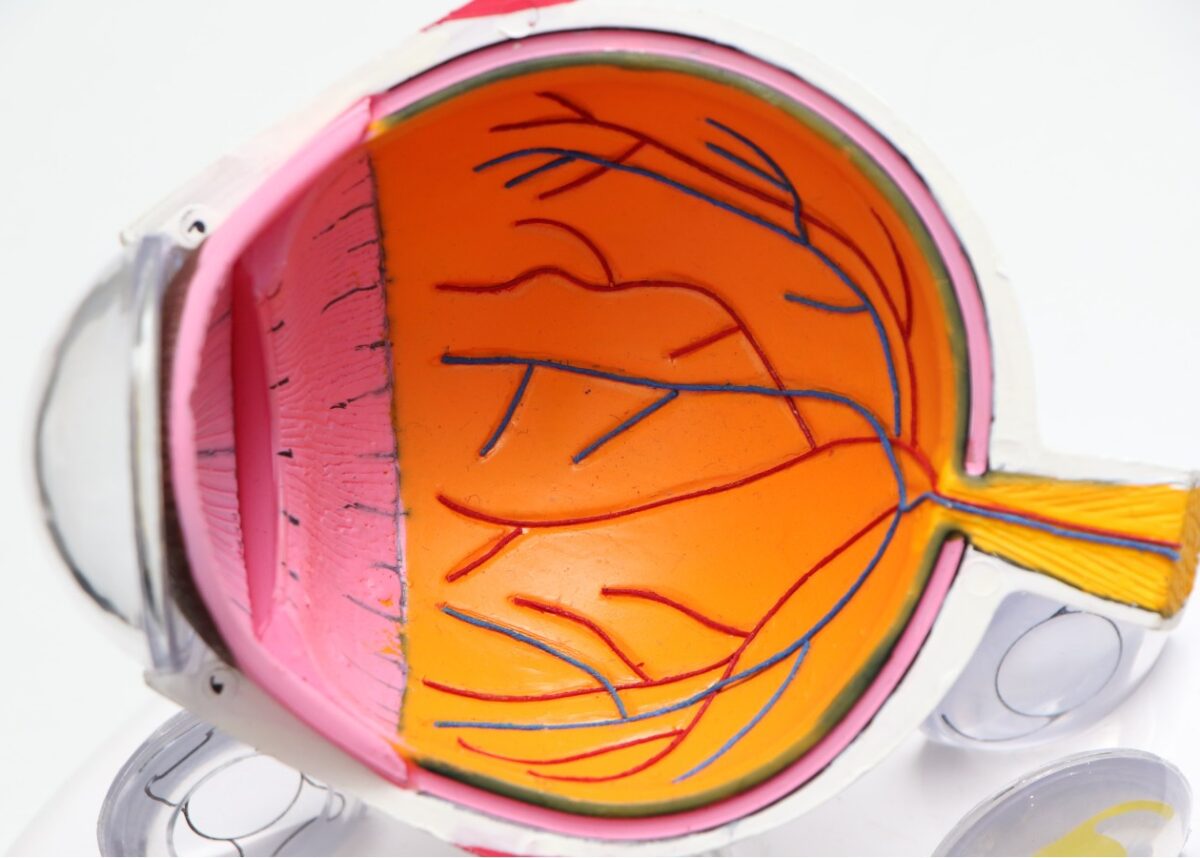Steven D. Munger, University of Florida
Humans rely on our senses to tell us about the world. Which way is that waterfall? Is it day or night? Is that food fresh or spoiled?
Such questions are harder to answer if our sensory systems can’t detect the sound of rushing water, the shimmer of moonlight or the odor of spoiled milk. Prior to this week, the Nobel Committee for Physiology or Medicine had recognized important advances in our understanding of how sensations are detected in three sensory systems: hearing, vision and smell.
Now, the Nobel Committee has awarded this year’s prize in medicine to two scientists who have advanced our understanding of this detection process for “somatosensation,” the sense responsible for the perceptions of touch, temperature, vibration, pain and proprioception – the body’s ability to sense its own movements and position in space.
On Oct. 4, 2021, David Julius, a professor of physiology at the University of California, San Francisco, and Ardem Patapoutian, a neuroscientist at the Howard Hughes Medical Institute and Scripps Research, were awarded the Nobel Prize in Physiology or Medicine for their pioneering work identifying proteins that the body uses to detect temperature and pressure. These two scientists led teams that unraveled key steps in the processes by which temperature and pressure are recognized by sensory cells and converted into signals that can be interpreted by the brain as perceptions such as warmth, cold or texture.
My own research has long focused on understanding these types of processes as they relate to the senses of smell and taste. Using the tools of molecular biology and neuroscience – not unlike some of those employed by Julius and Patapoutian – my collaborators and I are working to understand how smell and taste receptors enable us to detect the diverse chemicals that make up odors and tastes.
The work of Julius and Patapoutian has greatly expanded scientists’ views of how the nervous system deciphers the external and internal world by introducing us to entirely new classes of sensory receptors. Their findings have yielded critical and novel insights into the physiology of temperature, pain and touch sensation.

Bringing the heat
Scientific inquiry is an attempt to answer questions about processes that people observe in nature. Some of the biggest advances come from taking a new perspective – and applying new techniques to – a long-studied question.
The path toward the discovery of a heat-sensing receptor by Julius and colleagues began with a simple observation that many people have made during a meal – that chili peppers can cause a burning, painful sensation. Indeed, we often describe spicy foods as being “hot” even if the food itself is cold. Many plants, including chiles, herbs and spices, produce compounds that can be irritating when encountered in excess, but add complexity to foods in moderation.
Nociceptors are special sensory neurons that carry pain information, including pain from potentially damaging levels of heat. Scientists who study pain had known for years that capsaicin – the chemical in chiles responsible for their perceived heat – activates nociceptors. However, the mechanism by which this occurs was still unknown when Julius and his colleagues tackled the problem in the mid-1990s.
The Julius group’s important innovation was to use capsaicin itself as a tool to isolate the sensory receptor that detects capsaicin, a feat they reported in 1997. To do this, they tested thousands of different proteins produced by rodent sensory neurons until they found one that responded to capsaicin and its chemical cousins. As predicted, this protein also responded to high temperatures, indicating that it was the long sought-after heat sensor in these neurons.
This protein, named TRPV1, was the first of a group of related proteins discovered by Julius’ lab and other groups that respond to diverse plant chemicals and different temperatures. For example, the protein TRPM8 is activated by both cold and menthol, the chemical that causes the cooling sensation of mint, while the protein TRPA1 is turned on by the pungent compounds found in garlic.
Finding the touch
While Patapoutian and colleagues also investigated this family of temperature-sensing proteins, they soon turned their attention to another aspect of somatosensation – touch.
But they faced a unique challenge: All cells seem to respond to physical pressure. So the question became: How could the researchers differentiate the function of a specific pressure sensor from this more general response?
They took a clever approach. Instead of testing the products of single genes for their ability to respond to pressure – a strategy that worked so well for identifying the capsaicin receptor – Patapoutian and his team instead silenced single genes, one by one, in a touch-sensitive cell until the cell lost its ability to respond.
They then confirmed in nerve cells that two related proteins, named Piezo1 and Piezo2, mediated responses to physical stimulation. Later, the Patapoutian group and others showed more directly that Piezo proteins are critical for touch itself.
Opening doors to new scientific discoveries
The discoveries of Julius and Patapoutian have given sensory researchers fundamental insights into how people interact with their world. But they will almost certainly lead to important medical advances as well.
For example, red blood cells also express Piezo1, which may help them change shape to fit through tiny capillaries. However, certain mutations in Piezo1 can lead to deformed red blood cells and a rare type of anemia, in which red blood cell numbers are depleted.
Topical capsaicin creams are already used by many people as over-the-counter treatments for the relief of minor muscle pains. But this family of temperature-sensing proteins could also prove to be useful targets for new drugs aimed at treating debilitating, chronic pain.
Temperature-sensitive Trp-family proteins remain important for the detection of compounds present in a variety of edible plants such as chiles, mint and garlic. For people with an impaired sense of smell or taste, stimulating these pathways can help enhance the palatability of food that otherwise may seem flavorless. Identifying new flavor compounds that specifically target these novel proteins may help increase the enjoyment of food and drink by the millions of people experiencing smell or taste disorders, including those caused by COVID-19.
Nature gave us a hint that a whole new world of biology was waiting to be discovered. Julius and Patapoutian have now pointed the way.
Steven D. Munger, Professor of Pharmacology and Therapeutics, University of Florida
This article is republished from The Conversation under a Creative Commons license. Read the original article.












